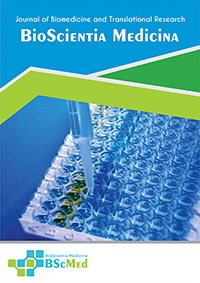Main Article Content
Abstract
Background: The management of non-segmental vitiligo hinges on accurately assessing disease activity to guide appropriate therapy. A clinical challenge arises in patients presenting with a low vitiligo area scoring index (VASI), suggesting limited disease, which may be discordant with underlying inflammatory activity, potentially leading to therapeutic inertia.
Case presentation: A 34-year-old woman with Fitzpatrick skin type III presented with a two-month history of rapidly progressing facial vitiligo, preceded by an erythematous phase. Despite a low VASI score of 1, the patient-reported vitiligo disease activity (VIDA) score was +4. Dermoscopy was instrumental, revealing definitive in-vivo evidence of inflammation and instability, including a pinkish background, telangiectasias, and a reversed pigment network. Based on this discordance between disease extent and activity, a multi-modal therapeutic regimen was initiated. A six-month follow-up demonstrated disease stabilization and significant perifollicular repigmentation, with resolution of the inflammatory dermoscopic signs.
Conclusion: This case report illustrates the critical importance of an integrated diagnostic approach that moves beyond area-based assessment. It highlights how dermoscopy, when used to resolve the clinical paradox of low-extent but high-activity disease, can serve as an objective biomarker to justify timely and robust immunomodulatory intervention. This approach is crucial for altering the disease trajectory and optimizing patient outcomes.
Keywords
Article Details
As our aim is to disseminate original research article, hence the publishing right is a necessary one. The publishing right is needed in order to reach the agreement between the author and publisher. As the journal is fully open access, the authors will sign an exclusive license agreement.
The authors have the right to:
- Share their article in the same ways permitted to third parties under the relevant user license.
- Retain copyright, patent, trademark and other intellectual property rights including research data.
- Proper attribution and credit for the published work.
For the open access article, the publisher is granted to the following right.
- The non-exclusive right to publish the article and grant right to others.
- For the published article, the publisher applied for the Creative Commons Attribution-NonCommercial-ShareAlike 4.0 International License.





